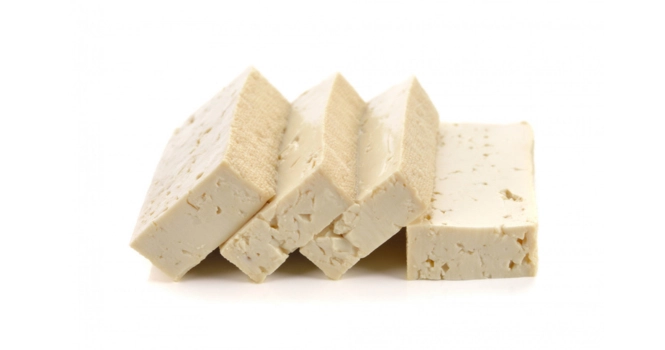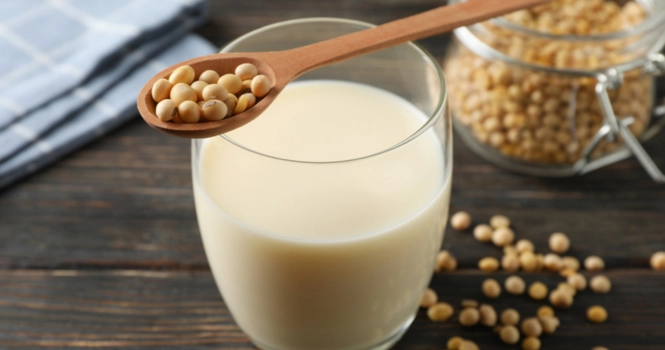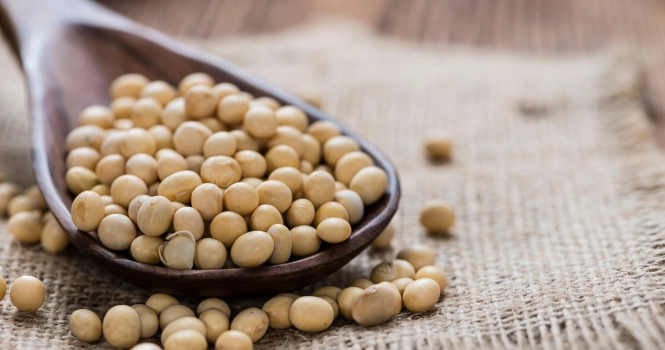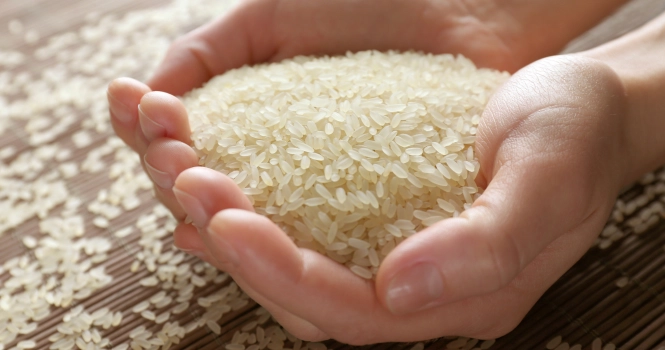Vitamin D Rich Foods: A Sunshine for Your Health
In a world where health is paramount, vitamins and minerals take center stage, and among them, Vitamin D holds a special spot.
Often referred to as the “Sunshine Vitamin”, Vitamin D is unique because it’s one of the few vitamins that can be synthesized by our body through exposure to sunlight. It plays an indispensable role in our health by promoting bone strength, supporting immune function, and regulating mood among other benefits.
However, with our increasingly indoor lifestyles, work from home schedule and, in some areas, limited sunlight, getting enough of this vital nutrient through sun exposure alone might not be practical or sufficient for everyone. This is where Vitamin D-rich foods and supplements come into play.
What if you live in an area with limited sunlight? What if your dietary choices or restrictions make it challenging to get enough Vitamin D?

Fear not, as nature is abundant in its offerings. From the catch of the sea to the bounty of the farm, a variety of foods can help you meet your Vitamin D requirements.
In this article, we’ll explore the fascinating world of Vitamin D and dive into a treasure trove of foods that are rich in this essential nutrient.
Whether you’re a seafood enthusiast, a devout vegetarian, or somewhere in between, we’ve got you covered with options to help you embrace the benefits of the Sunshine Vitamin.
Let’s start with what is required daily intake of Vitamin D…
Recommended Daily intake of Vitamin D
- Infants 0-12 months: 400 IU (10 micrograms) per day.
- Children and Adolescents 1-18 years: 600 IU (15 micrograms) per day.
- Adults 19-70 years: 600 IU (15 micrograms) per day.
- Adults 71 years and older: 800 IU (20 micrograms) per day.
- Pregnant and breastfeeding women: 600 IU (15 micrograms) per day.
Types of Vitamin D
Vitamin D is a group of fat-soluble secosteroids that play a vital role in calcium absorption and bone health, among other functions. The two main forms of vitamin D that are important to humans are vitamin D2 and vitamin D3.
1. Vitamin D2 (ergocalciferol):
This form of vitamin D is found in certain foods, such as mushrooms and is often used to fortify foods like milk and cereals.
It is also the form of vitamin D usually found in high-dose prescription medication and over-the-counter vitamin D supplements.
Vitamin D2 is synthesized by plants and fungi when they are exposed to ultraviolet (UV) radiation.
2. Vitamin D3 (cholecalciferol):
This form of vitamin D is synthesized in the skin of humans and animals when it is exposed to UVB rays from the sun.
It is also found in certain foods, such as fatty fish (e.g., salmon, mackerel, and sardines), beef liver, egg yolks, and in small amounts in cheese.
Additionally, it is available as a dietary supplement and is often used to fortify foods.
There are other forms of vitamin D, such as D1, D4, and D5, but they are not as well-studied or as biologically important as D2 and D3.
Both vitamin D2 and D3 are inactive in the body and need to be converted into their active form, called calcitriol, to function effectively.
This conversion process involves two hydroxylation steps, first in the liver to form 25-hydroxyvitamin D (calcifediol), and then in the kidney to form 1,25-dihydroxyvitamin D (calcitriol).
In general, vitamin D3 is considered to be more effective at raising blood levels of vitamin D compared to D2, and it is often preferred for supplementation. However, both forms can be effective if taken in appropriate amounts.
Which Type of Vitamin D is Tested in Lab for Vitamin D Deficiency?
In laboratory tests for vitamin D deficiency, the level of 25-hydroxyvitamin D, also known as calcifediol or 25(OH)D, is usually measured. This form is the main circulating form of vitamin D in the blood and is considered the best indicator of a person’s vitamin D status.
25-hydroxyvitamin D is what your body creates after vitamin D has been absorbed by your skin from sunlight or ingested from your diet. Both vitamin D2, which we get from our food, and vitamin D3, synthesized in our skin, undergo a process in the liver to become 25-hydroxyvitamin D.
When we talk about the amount of 25-hydroxyvitamin D, we’re considering the total amount from both food and what’s made by your body. This is important because it’s this form of vitamin D that doctors measure to check if you have vitamin D deficiency, sufficiency, or excess.
If you have concerns about your vitamin D levels or think you might be deficient, it is advisable to consult your doctor who can guide you regarding testing and any necessary supplementation or lifestyle changes.
What Are The Normal Values of Vitamin D In The Blood?
Normal lab values for vitamin D can vary slightly depending on the laboratory that analyzes the blood sample, as different labs may use slightly different measurement techniques. The following in a General Guideline,
- Deficient: Less than 20 ng/mL (50 nmol/L)
- Insufficient: 20-29 ng/mL (50-74 nmol/L)
- Sufficient: 30-100 ng/mL (75-250 nmol/L)
- Potentially harmful (Vitamin D toxicity): Above 100 ng/mL (250 nmol/L)
What Is the Optimal Time for Sunbathing to Produce Vitamin D from the Skin?
The production of vitamin D in the skin through sun exposure depends on several factors, including the angle of the sun, your geographical location, skin type, and the amount of skin exposed.
Generally, vitamin D synthesis is most efficient when the sun is at its highest point in the sky, which usually occurs around midday.
The following Factors are important,
1. Time of Year and Latitude:
During the summer months, the sun is higher in the sky and emits more UVB radiation, which is necessary for vitamin D production. However, in higher latitudes, especially during the winter months, the sun’s angle is lower, and UVB radiation is less intense or virtually nonexistent, making it difficult or impossible to produce vitamin D through sun exposure.
2. Time of Day:
As mentioned earlier, the sun’s rays are generally most direct around solar noon, which is when vitamin D synthesis is most efficient. This is usually a few hours before and after 12:00 PM. However, it’s also the time when the sun’s rays are most intense, increasing the risk of sunburn.
3. Skin Type:
People with darker skin have more melanin, which reduces the skin’s ability to produce vitamin D. Therefore, they may need to spend more time in the sun compared to people with lighter skin to produce the same amount of vitamin D.
4. Sunscreen and Clothing:
Using sunscreen or covering the skin with clothing blocks UVB radiation and inhibits vitamin D production. However, it is essential to balance the need for vitamin D production with the need to protect the skin from damage that can lead to skin cancer.
Given the variability in these factors, there is no one-size-fits-all recommendation for sun exposure to produce vitamin D. Additionally, excessive sun exposure has risks, including skin aging and an increased risk of skin cancer. Therefore, it’s important to approach sun exposure with caution.
If you are concerned about your vitamin D levels or safe sun exposure for vitamin D production, it is advisable to consult your family physician for personalized guidance.
They may also recommend vitamin D supplements, especially during the winter months or if you have limited sun exposure for other reasons.
Sources For Vegetarians

For vegetarians, obtaining vitamin D from dietary sources can be a bit challenging, as most natural sources of vitamin D are animal-based. However, there are some options available:
1. Fortified Foods:
Many vegetarians rely on foods fortified with vitamin D. Commonly fortified foods include plant-based milk alternatives such as soy milk, almond milk, and oat milk, as well as fortified orange juice and fortified cereals.
It’s important to check the label to see if the product is fortified with vitamin D, and if it is vitamin D2, which is typically the vegetarian form.
2. Mushrooms:
Certain types of mushrooms, such as maitake and shiitake, can contain vitamin D when they are exposed to ultraviolet (UV) light during growth.
However, it’s important to note that the form of vitamin D found in mushrooms is vitamin D2 (ergocalciferol), which is not as effective in raising blood levels of vitamin D as the D3 form found in animal sources. Additionally, the content can vary, so they shouldn’t be solely relied upon to meet vitamin D needs.
3. Supplements:
Vitamin D supplements can be an effective way for vegetarians to ensure they are getting enough of this nutrient. There are vitamin D2 supplements available which are usually suitable for vegetarians. Also, some vitamin D3 supplements are made from lichen and are vegetarian-friendly.
As for vegetables, unfortunately, there are no significant sources of vitamin D in vegetables. The main dietary sources of vitamin D are animal-based, such as fatty fish, beef liver, cheese, and egg yolks.
Given the limited dietary sources of vitamin D for vegetarians, it’s important to pay attention to vitamin D status, and consulting a healthcare provider for personalized advice may be beneficial, especially in regions with limited sunlight exposure.
Sources For Non-Vegetarians
For non-vegetarians, there are several dietary sources of vitamin D, mainly in the form of vitamin D3 (cholecalciferol), which is considered more effective in raising blood levels of vitamin D compared to the D2 form. Here are some common sources:
1. Fatty Fish:
Fatty fish are among the best natural sources of vitamin D. Examples include salmon, mackerel, sardines, and trout. The exact amount of vitamin D in these fish can vary depending on factors such as their diet and how they were raised (wild-caught vs. farmed), but in general, they are good sources.
2. Cod Liver Oil:
While not a food per se, cod liver oil is a very rich source of vitamin D and is often taken as a dietary supplement. In addition to vitamin D, it also contains high levels of vitamin A and omega-3 fatty acids.
3. Egg Yolks:
Eggs, particularly the yolks, contain small amounts of vitamin D. However, one would need to consume a large number of eggs to get sufficient amounts of vitamin D solely from this source.
4. Beef Liver:
Beef liver is a source of vitamin D, but like egg yolks, it’s not particularly high in vitamin D, and consuming it in large amounts is not practical due to its high content of vitamin A, which can be toxic in excessive amounts.
5. Cheese:
Certain types of cheese, like cheddar and Swiss, contain small amounts of vitamin D, but again, they are not particularly rich sources.
6. Fortified Foods:
While not naturally high in vitamin D, certain foods are often fortified with vitamin D. This includes cow’s milk, orange juice, and some cereals. Check the nutrition label to see if vitamin D has been added.
It’s important to recognize that even with a non-vegetarian diet, obtaining sufficient vitamin D through food sources alone can be challenging.
Sun exposure plays a significant role in vitamin D synthesis for many people, and vitamin D supplements can be beneficial, especially in regions with limited sunlight or for individuals who have difficulty obtaining enough vitamin D through diet and sun exposure..
Vitamin D Supplements
Vitamin D supplements are an effective way to ensure adequate vitamin D intake, especially for individuals who have limited sun exposure, dietary restrictions, or difficulty obtaining enough vitamin D from food sources. There are two main forms of vitamin D supplements:
1. Vitamin D2 (Ergocalciferol):
This form of vitamin D is typically derived from yeast or fungi, and is considered to be the vegan or vegetarian-friendly form of vitamin D. It’s used to fortify foods and is also available as a standalone supplement.
2. Vitamin D3 (Cholecalciferol):
This is the form of vitamin D that is synthesized in the skin upon exposure to sunlight and is found in animal-based food sources. Most vitamin D3 supplements are derived from fish liver oil or lanolin (from sheep’s wool), but there are also vegan/vegetarian versions of vitamin D3 supplements derived from lichen.
There are also vitamin D supplements available in various forms, including:
Tablets and Capsules: This is the most common form. They come in various doses.
Liquid Drops: For those who have difficulty swallowing pills, liquid forms of vitamin D are available.
Chewable Tablets: These are often flavored and are an option for both children and adults who prefer not to swallow pills.
Fortified Foods: Some products, such as milk substitutes, orange juice, and cereals, are fortified with vitamin D and can be considered a supplemental source.
When considering vitamin D supplements, it is important to pay attention to the dosage and to avoid excessive intake, as too much vitamin D can be harmful.
The tolerable upper intake level for adults is generally set at 4,000 IU (100 micrograms) per day, though some healthcare providers might recommend higher doses for individuals with vitamin D deficiency under medical supervision.
It’s advisable to consult your doctor for personalized recommendations on vitamin D supplementation, especially if there is a specific health concern or condition that may affect vitamin D requirements.
Lets see what happens if you don’t get the required amount of Vitamin D and how Vitamin D deficiency manifests,
Vitamin D Deficiency Symptoms
Vitamin D deficiency can manifest in various ways, and sometimes the symptoms can be subtle or nonspecific. Here are some common symptoms and signs of vitamin D deficiency:
1. Muscle Weakness and Fatigue: One of the common symptoms of vitamin D deficiency is a general feeling of fatigue and weakness, which may be accompanied by muscle aches and pains.
2. Bone Pain: Vitamin D is essential for calcium absorption, and deficiency can lead to aching or throbbing bone pain.
3. Frequent Infections: Vitamin D plays a role in immune function, and deficiency may be associated with increased susceptibility to infections, particularly respiratory infections.
4. Depression and Mood Changes: There is some evidence linking vitamin D deficiency to depression and mood changes, though the relationship is not entirely clear.
5. Impaired Wound Healing: Slow healing of wounds may be a sign of vitamin D deficiency.
6. Hair Loss: Severe vitamin D deficiency has been linked to hair loss, possibly due to its role in follicle health.
7. Decreased Bone Mineral Density: Long-term vitamin D deficiency can lead to decreased bone mineral density, increasing the risk of osteoporosis and fractures.
8. Muscle Cramps: Some people with vitamin D deficiency experience muscle cramps and spasms.
9. Joint Pain: Joint pain, particularly in the knees, can be associated with vitamin D deficiency.
10. Difficulty in Climbing Stairs or Getting Up from the Floor: As vitamin D deficiency can cause muscle weakness, people may find it difficult to climb stairs or get up from the floor.
It’s important to note that vitamin D deficiency can sometimes be asymptomatic, especially in the early stages. This means that a person might not experience any noticeable symptoms despite having low vitamin D levels.
Because of the nonspecific nature of many of the symptoms and the potential for long-term harm if vitamin D deficiency is not addressed, it is important to monitor vitamin D levels, especially in populations at risk for deficiency, such as people with limited sun exposure, darker skin, or a history of gastrointestinal conditions that impair fat absorption.
If you suspect that you may have a vitamin D deficiency, it is advisable to consult your doctor, who can recommend a blood test to measure vitamin D levels and provide guidance on supplementation or other interventions if necessary.
Frequently Asked Questions
What Foods Are Highest in Vitamin D?
- Fatty fish such as salmon, mackerel, and sardines are among the richest sources of vitamin D.
- Cod liver oil is also a very high source of vitamin D, though it’s not technically a food.
- Fortified foods, such as some dairy products, orange juice, and cereals, can also be high in vitamin D.
- Egg yolks and beef liver contain smaller amounts of vitamin D.
In Which Fruit Is Vitamin D High?
Fruits generally do not contain significant amounts of vitamin D. There are no natural fruits that are high in vitamin D.
Which Vegetables Contain Vitamin D?
The only vegetables that contain some vitamin D are certain mushrooms, particularly maitake and shiitake, and only when they have been exposed to ultraviolet (UV) light during their growth.
Other vegetables do not contain significant amounts of vitamin D.
How Much Vitamin D Per Day?
The recommended daily intake of vitamin D varies based on age, sex, and life stage. For most adults, the recommended dietary allowance (RDA) is 600 to 800 IU (15 to 20 micrograms) per day.
However, some experts suggest higher intakes for optimal health, especially for individuals with limited sun exposure.
How Do I Increase My Vitamin D?
- Get some sun exposure, but do it safely without getting burned.
- Eat foods that are high in vitamin D or fortified with vitamin D.
- Take vitamin D supplements if necessary, especially during the winter or if you have limited sun exposure.
Do Almonds Have Vitamin D?
Almonds do not contain vitamin D. They are, however, a good source of vitamin E and magnesium.
Which Indian Food Has Vitamin D?
In traditional Indian cuisine, there are not many natural sources of vitamin D. However, some foods and ingredients used in Indian cooking that can contain vitamin D include egg yolks and fatty fish (if included in the diet).
Additionally, in India, some brands fortify foods like milk and margarine with vitamin D.
Do Carrots Have Vitamin D?
Carrots do not contain vitamin D. They are, however, very high in vitamin A in the form of beta-carotene.
Does Ghee Contain Vitamin D?
Ghee, which is clarified butter, can contain small amounts of vitamin D, but the amount is generally not very high. It is also dependent on the diet and sun exposure of the cows producing the milk from which the ghee is made.
How Do Vegetarians Get Vitamin D?
- Vegetarians can obtain vitamin D from fortified foods such as plant-based milk alternatives (soy, almond, oat milk), fortified orange juice, and fortified cereals.
- Certain mushrooms exposed to UV light during growth contain vitamin D2, though in small amounts.
- Supplements are often a practical option for vegetarians, particularly vitamin D2 supplements or lichen-sourced vitamin D3 supplements which are vegetarian-friendly.
- Sun exposure also helps the skin to produce vitamin D.
Does Paneer Have Vitamin D?
Paneer, a type of Indian cheese, does not naturally contain significant amounts of vitamin D. However, if it is made from milk that has been fortified with vitamin D, it may contain some of the vitamin.
What Causes Vitamin D Deficiency?
- Limited sun exposure, leading to decreased vitamin D synthesis in the skin.
- A diet low in vitamin D-rich foods.
- Malabsorption disorders, such as celiac disease, that prevent the intestines from absorbing the vitamin from food.
- Darker skin pigmentation, which reduces the skin’s ability to produce vitamin D from sunlight.
- Kidney or liver disorders that affect the conversion of vitamin D to its active form.
- Certain medications that interfere with vitamin D metabolism.
How Can I Increase My Vitamin D and B12?
- For vitamin D: Increase sun exposure safely, consume vitamin D-rich or fortified foods, and consider taking vitamin D supplements if needed.
- For vitamin B12: Consume foods rich in B12 such as dairy products, eggs, and fortified foods, or take vitamin B12 supplements, especially if you are vegetarian or vegan as B12 is primarily found in animal products.
What Are the Signs You Need Vitamin D?
Some signs of vitamin D deficiency include fatigue, muscle weakness, bone and joint pain, frequent infections, depression, impaired wound healing, and hair loss.
Is Vitamin D Deficiency Serious?
Yes, vitamin D deficiency can be serious if left unaddressed. It is essential for bone health, and deficiency can lead to osteoporosis or rickets in children. It also plays a role in immune function, and deficiency may contribute to an increased risk of infections and chronic diseases.
What to Do If Vitamin D Is Low?
If your vitamin D levels are low, it is advisable to consult a healthcare provider. They might recommend increasing sun exposure, making dietary changes, or taking vitamin D supplements.
In cases of severe deficiency, high-dose vitamin D supplements may be prescribed.
Which Time Is Sunlight Good for Vitamin D?
The best time to get sunlight for vitamin D production is typically midday, when the sun is at its highest point in the sky.
This is usually around 12 Noon to 1 pm. However, the effectiveness of sunlight in stimulating vitamin D production varies with latitude, season, and skin type.
It’s also important to balance sun exposure with skin cancer prevention by not overexposing the skin and using sun protection when necessary.
Which Dry Fruit Is Good for Bones?
Almonds and dried figs are particularly good for bones. Almonds are rich in calcium and magnesium, which are important for bone health, while dried figs are high in calcium.
Is 2 Eggs a Day Enough Vitamin D?
No, two eggs a day are not enough to meet your vitamin D needs. One egg yolk contains about 40 IU of vitamin D, so two eggs would provide only about 80 IU. The recommended daily intake of vitamin D for most adults is 600 to 800 IU.
Which Dry Fruit Is Best for Calcium?
Dried figs are one of the best dry fruits for calcium. A half-cup of dried figs contains roughly 120 milligrams of calcium.
Which Dry Fruit Is Best for Vitamin D?
Dry fruits generally do not contain significant amounts of vitamin D. Vitamin D is primarily found in fatty fish, fortified foods, and is synthesized in the skin through sun exposure.
What Are 5 Sources of Vitamin D?
- Fatty Fish (such as salmon, mackerel, and sardines)
- Cod Liver Oil
- Fortified Dairy Products (such as milk and yogurt)
- Fortified Plant-Based Milk (such as almond milk, soy milk)
- Egg Yolks
Why Is Vitamin D Low in Indians?
There are several reasons why Vitamin D deficiency is common among Indians:
- Skin Pigmentation: Darker skin types are less efficient at producing vitamin D from sunlight.
- Sun Avoidance and Clothing: Cultural practices may involve covering most of the body, and sun avoidance is common due to the desire to maintain a lighter skin complexion.
- Pollution: In some areas of India, pollution levels can be high, which can block UVB rays needed for vitamin D synthesis.
- Dietary Factors: Traditional Indian diets may not include many natural sources of vitamin D.
- Genetic Factors: There may also be genetic factors that affect the metabolism of vitamin D in the Indian population.
Sources
- https://www.ncbi.nlm.nih.gov/pmc/articles/PMC4179178/
- https://www.ncbi.nlm.nih.gov/pmc/articles/PMC6060930/
- https://www.betterhealth.vic.gov.a1. u/health/healthyliving/vitamin-d
![]()












